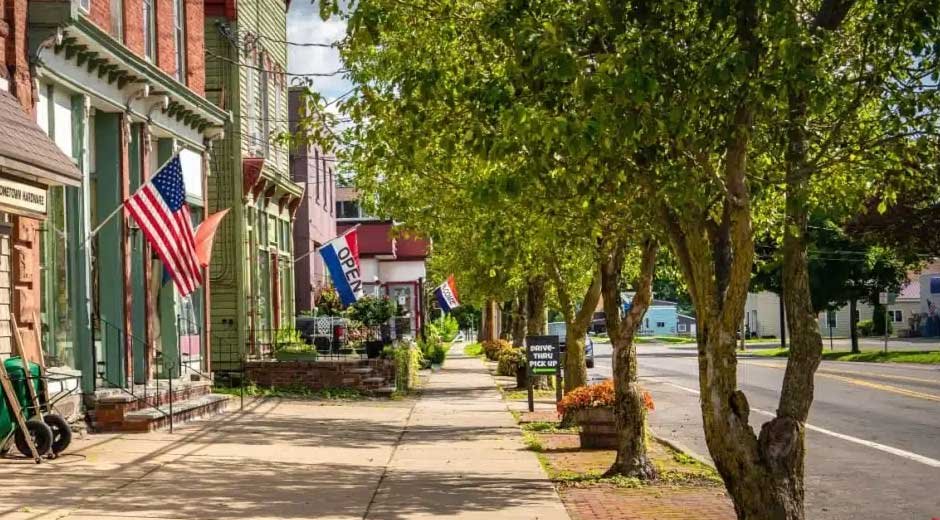Making the leap from rural living to big city life represents one of the most dramatic lifestyle changes a person can experience. Everything from the pace of daily life to the cost of groceries shifts dramatically when trading wide open spaces and familiar faces for towering buildings and anonymous crowds.
The reasons for these moves vary widely – job opportunities, educational pursuits, family circumstances, or simply the desire for change. But regardless of motivation, the adjustment period involves challenges that many small-town transplants don’t fully anticipate until they’re living in the middle of it.
Rural-to-urban moves aren’t just about changing addresses. They involve adapting to fundamentally different ways of living, working, and interacting with the world around you.
The Logistics of Long Distance Rural Moves
Planning the actual move from a small community to a major city requires different considerations than typical relocations. Rural properties often contain more belongings, larger furniture pieces, and equipment that doesn’t make sense in urban settings. Deciding what to bring versus what to leave behind becomes a major decision point.
Professional moving services become particularly valuable for these transitions. Companies specializing in long distance moving Canada for example, understand the unique challenges of rural-to-urban relocations, including navigating narrow city streets with large moving trucks and coordinating deliveries in dense urban areas where parking and building access can be complicated.
The distance factor also means these moves typically happen all at once rather than gradually. Unlike local moves where you might transport some items yourself over multiple trips, rural-to-urban relocations usually require getting everything moved in one coordinated effort.
Sticker Shock: The Real Cost Differences
Here’s where many rural transplants get their first major reality check – urban living costs significantly more than most small-town residents expect. Housing costs often represent the biggest shock, with urban rent for a small apartment sometimes exceeding mortgage payments for larger rural homes.
But the surprises don’t stop at housing. Parking fees, higher insurance rates, increased utility costs, and premium pricing for basic services all add up quickly. A haircut that cost $15 in a small town might run $75 in the city. Grocery costs increase not just due to higher prices, but because urban dwellers rely more on convenience foods and prepared meals.
The flip side is that urban salaries are often higher, but the adjustment period between spending more and earning more can create financial stress that rural transplants don’t anticipate.
Transportation: From Cars to Everything Else
Rural living typically revolves around personal vehicles out of necessity. Urban living offers more transportation options, but also presents new challenges that take time to navigate effectively.
Public transit systems can feel overwhelming initially, especially for people accustomed to driving everywhere. Learning bus routes, subway systems, and understanding peak travel times requires patience and practice. Many rural transplants discover that their reliable pickup truck becomes a liability in dense urban areas where parking is expensive and traffic moves slowly.
Walking becomes a primary mode of transportation for urban dwellers, which sounds simple but requires adjustment. Urban walking involves navigating crowds, understanding pedestrian signals, and developing awareness of street-level safety considerations that don’t exist in small communities.
Social Dynamics and Community Building
Small-town social structures are built on long-term relationships, shared history, and interconnected family networks. Urban social connections form differently, often based on work, shared interests, or geographic proximity within neighborhoods.
The anonymity of city living can feel liberating or isolating, depending on personality and circumstances. Rural transplants often miss the casual social interactions that happen naturally in small communities – running into neighbors at the grocery store, knowing the names of service providers, or being recognized at local businesses.
Building new social networks in cities requires more intentional effort. Urban dwellers typically need to actively seek out community connections through work, recreational activities, religious organizations, or volunteer opportunities rather than relying on the organic social interactions that characterize small-town life.
Housing: From Space to Convenience
Rural properties typically offer more space, both indoor and outdoor, than urban alternatives. Adjusting to smaller living spaces challenges people accustomed to having room for storage, hobbies, and privacy.
Urban housing often compensates for smaller individual spaces with shared amenities and proximity to services. Building gyms, rooftop terraces, and nearby parks replace private yards and home workshops. The trade-off involves giving up private space for convenient access to urban amenities.
Noise levels present another major adjustment. The sounds of city life – traffic, construction, neighbors in adjacent units – replace the quiet of rural settings. Many rural transplants need time to adjust to sleeping and living with constant background noise.
Services and Amenities: The Urban Advantage
Cities excel at providing services and amenities that rural areas simply can’t support economically. Healthcare specialists, cultural venues, diverse dining options, and educational opportunities all become more accessible in urban environments.
The challenge for rural transplants often involves learning to navigate these increased options. Having dozens of restaurant choices within walking distance can feel overwhelming for people accustomed to one or two local establishments. Similarly, urban healthcare systems offer more specialists but require more complex navigation than rural medical care.
Shopping patterns change significantly as well. Rural residents often plan weekly trips to stock up on necessities, while urban dwellers typically shop more frequently at smaller stores closer to home.
Making the Adjustment Work
Successful rural-to-urban transitions typically involve finding ways to maintain valued aspects of rural living while embracing urban advantages. This might mean seeking out urban neighborhoods with stronger community feels, finding green spaces for outdoor recreation, or maintaining connections with rural communities through regular visits.
The adjustment period varies, but most rural transplants report that it takes at least six months to feel comfortable with urban routines and up to two years to feel genuinely settled. Having realistic expectations about this timeline helps reduce frustration during the transition period.
Urban living offers opportunities and conveniences that small towns can’t match, but it requires learning new skills and adapting to different social and practical realities. Success comes from approaching the transition with curiosity rather than resistance, and patience with the learning process that urban living requires.









